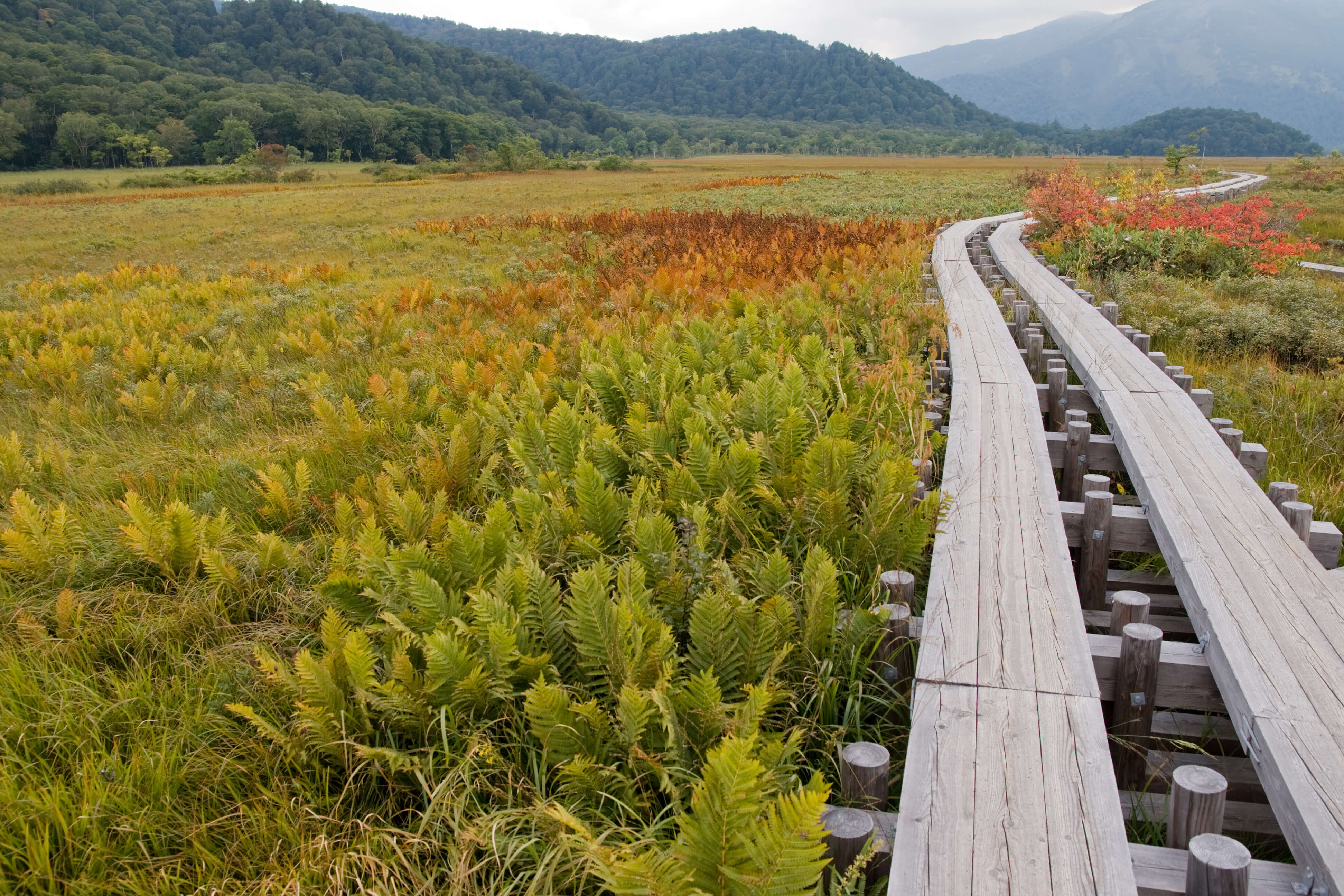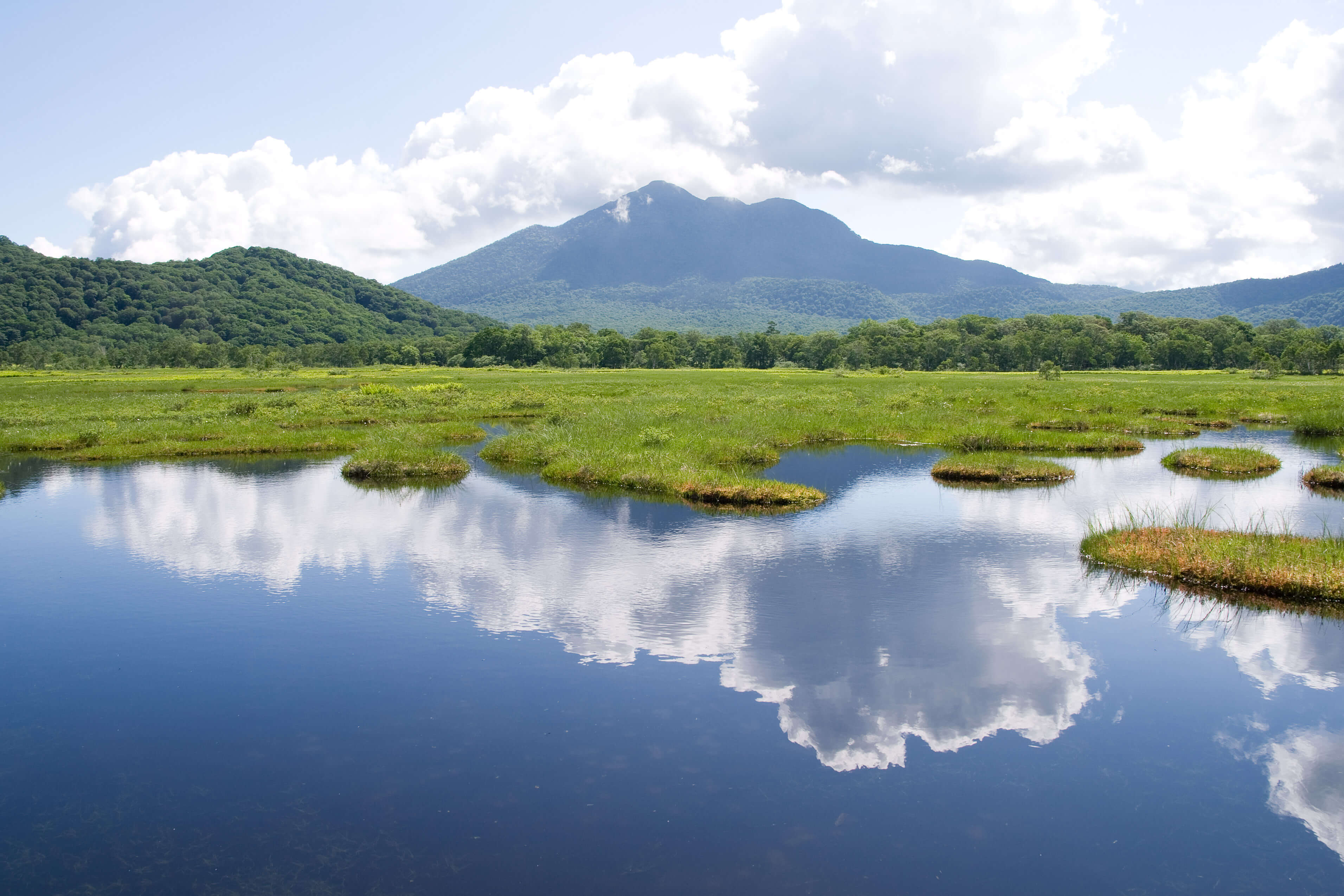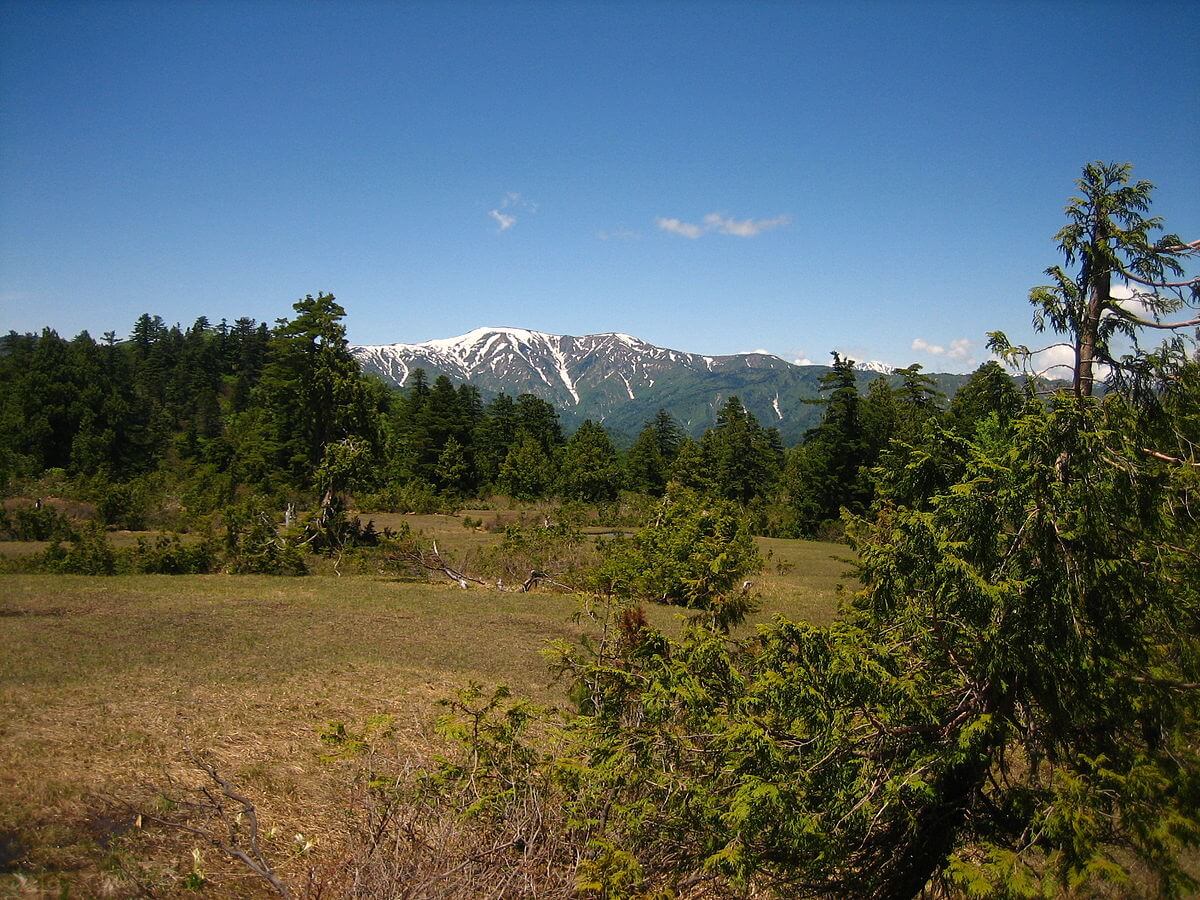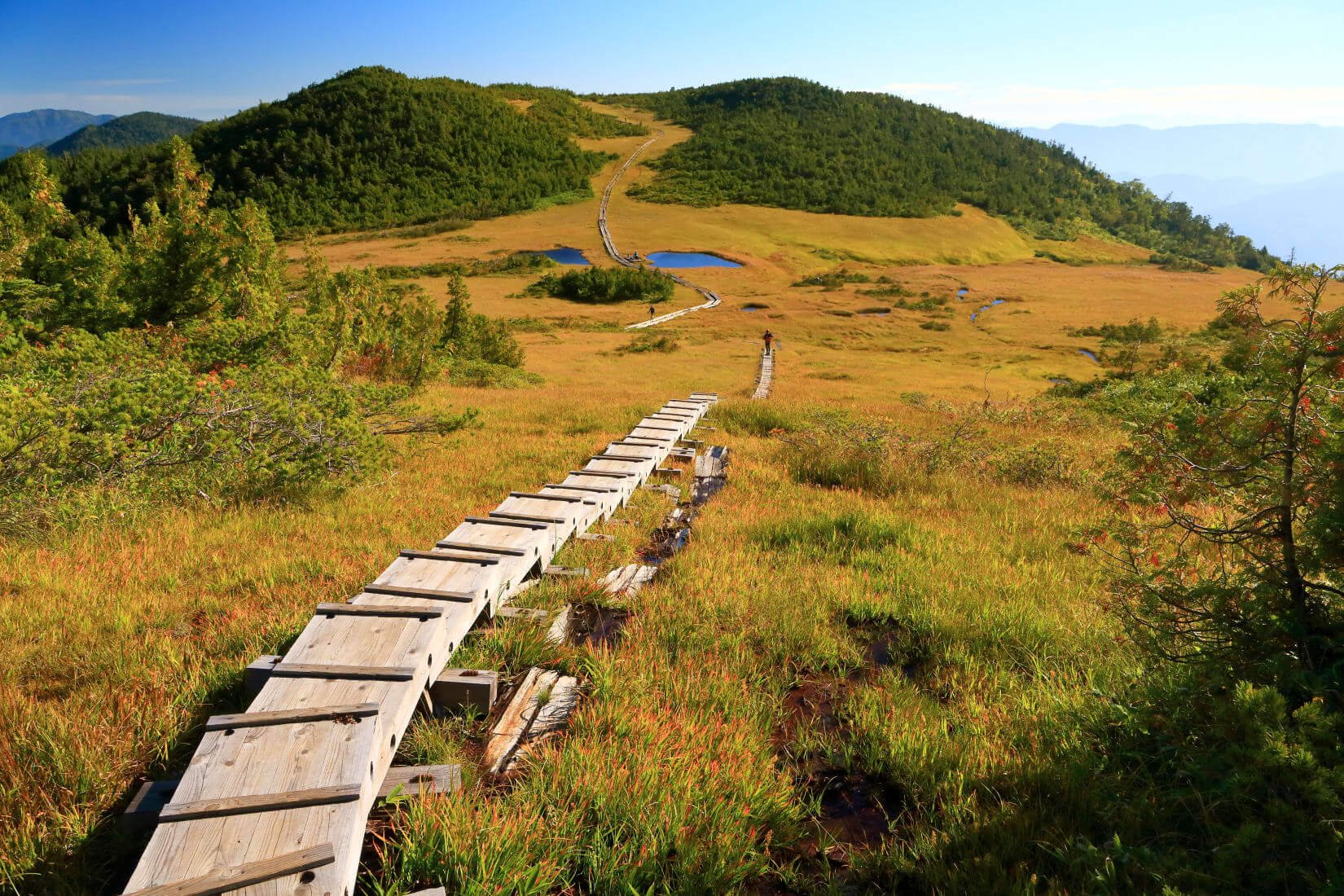Oze National Park, a Gem for Hikers
Situated 150 km north of Tokyo, this park is home to 200 protected species of flowers and animals including the Japanese black bear.

© Wikimedia
Founded in 2007, Oze National Park has already carved out a solid reputation for itself among hiking enthusiasts. Situated where four prefectures meet, namely Gunma, Fukushima, Niigata, and Tochigi, the park attracts walkers and those who are curious to discover the wild, protected nature to which it is home.
Created from lava that ran down from Mount Hiuchigatake over 10,000 years ago, it offers hikers various walks on which they can discover over 200 species of wild flowers, some of which date back to the Ice Age. The park is also known for its mountains covered in white skunk cabbage, which blooms at the end of spring, and its yellow lilies, which open their petals when summer comes. All of this appears before the peaks of Mount Shibutsusan and Mount Hiuchigatake, their summits still covered in snow.
Spend a night in the heart of nature
This reserve that houses rare flora and fauna, protected by the 2005 Ramsar Convention, is also preserved by the creation of wooden walkways, which prevent hikers from crushing the plants under their feet. Thus, there are three main routes running through the park: Hatoma Chitoge, the most popular, which takes walkers up to the Ozegahara marshland, the largest highland marsh in Japan; Oshimizu, a route for experienced hikers due to the incline that leads them to Ozenuma Pond in just two hours; and Fujimishita, the calmest route, which allows walkers to reach the pond and then the marshland through the woods.
Although the park can be easily visited in a day, it is also possible to spend the night there, in one of the many traditional huts that punctuate the hiking trails. To access the park from Tokyo, visitors can simply take a JR train to Numata station, then a bus towards Tokura. Between mid-May and mid-October, the period most conducive to visits, there are three buses running from Tokyo’s Shinjuku to Oze, a journey that takes four hours.
More information about Oze National Park can be found on its preservation fund’s website.

© Wikimedia

© Wikimedia

© Wikimedia

© Wikimedia
TRENDING
-
The Tattoos that Marked the Criminals of the Edo Period
Traditional tattoos were strong signifiers; murderers had head tattoos, while theft might result in an arm tattoo.

-
Paris, Tokyo: Robert Compagnon
With his co-chef and talented wife, Jessica Yang, Robert Compagnon opened one of the top new restaurants in Paris: Le Rigmarole.
 3:31
3:31 -
Chiharu Shiota, Red Threads of the Soul
Last year, more than 660,000 people visited the retrospective 'Chiharu Shiota: The Soul Trembles' exhibit at the Mori Art Museum.

-
‘Before Doubting Others, Doubt Yourself. Who Can Truly Say a Dish Isn’t What It Used to Be?’
In ‘A Non-Conformist’s Guide to Surviving Society’, author Satoshi Ogawa shares his strategies for navigating everyday life.

-
The Story of Sada Yacco, the Geisha who Bewitched Europe
Described by Dazed magazine as the first beauty influencer, she has been restored to her former glory since 2019.





